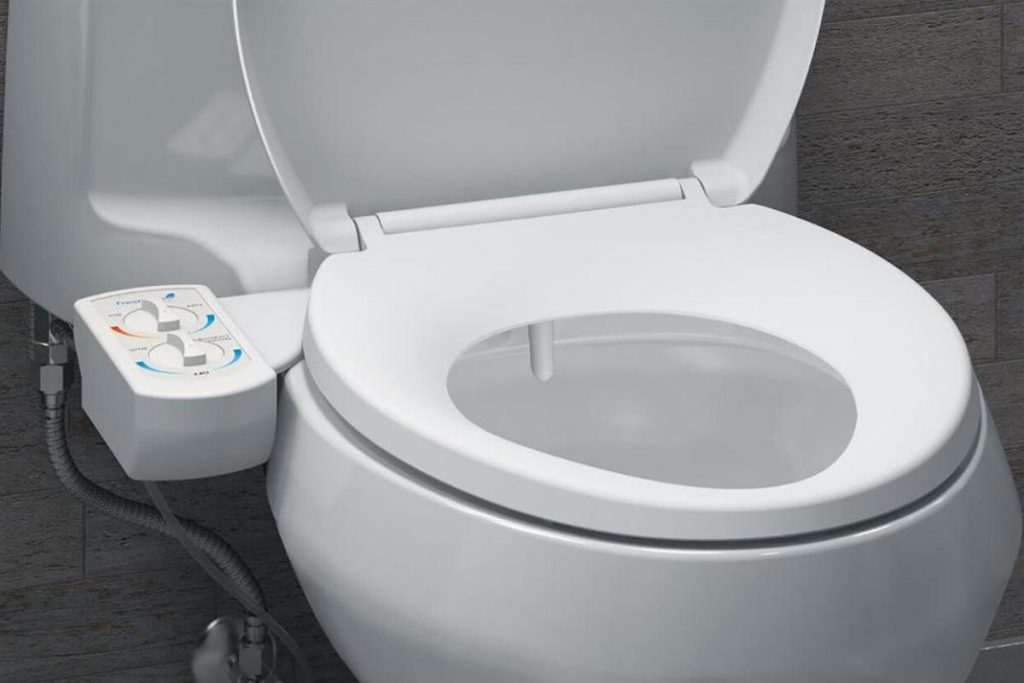A bidet can be used to rinse any remaining toilet water and germs from the body after using the restroom. Bidets, which are more sanitary than toilet paper, are becoming more popular among Americans. A bidet can be added to an existing toilet or built as a separate unit.
Before installing a bidet in your bathroom, you should know a few facts. This comprehensive guide covers everything about bidets, from the advantages of getting one to how to install bidet attachment. Continue reading to learn more.

How to install bidet attachment
It takes only a few minutes to attach a bidet attachment to your existing bathroom sink or tub/shower combo, giving you a convenient way to wash and clean your items. You can do it yourself in under 30 minutes using only a few common household items and a drill.
Stop the water supply
Turning the water supply off to the bidet toilet tank is a must if you don’t want water seeping during installation. When you’re finished, flush the tank to get rid of the water that’s already there. Doing so can prevent any serious leaks from occurring when you attempt to install the bidet accessory.
Remove toilet seat and clean
Two huge bolts secure the rear of the toilet seat to the bowl; on certain models, you’ll need to raise a cover to get at them. Size, material, and style will vary depending on the toilet seat. Unscrew the toilet seat using a wrench or screwdriver and take it out of the toilet. Older toilets that have seen some rust may take more effort, a good pair of pliers, and a lubricating spray. This is usually a simple task, though.
You know it’s time to wipe the toilet since the seat is down. Before using the bidet, you should clean the entire toilet. You may never get another chance to give your toilet a thorough cleaning with the seat removed and all the dirt and grime exposed, so use the time wisely.
Configure and place the bidet attachment
The bidet is made to fit underneath your seat or next to the toilet bowl. Place the bidet over the holes in the bowl where your toilet bolts were. For proper alignment with your toilet bowl, so you can access both holes, many bidets will have adjustments you can make. Ensure that the bidet is pushed back as far as it will go and is properly centered in the toilet bowl.
Bidets occasionally come with mounting plates, making this a two-step process. When installing a bidet that completely replaces your toilet seat rather than simply sitting underneath it, you must first put the mounting plate over your existing bolt holes before fastening the remainder of the bidet with the new bolts that come with it.
Reattach toilet seat
Put your toilet seat back on if your bidet can’t completely take its place. The toilet seat above your bidet should be placed over the same bolt holes and screwed back in. Some bidets may provide new bolts and washers to assist with this, while others may require you to use your original bolts. In fewer instances, the original bolts won’t be long enough to support both the seat and the bidet. In this case, it’s necessary to search for larger toilet seat bolts at the hardware store to accommodate the new scenario.
Connect the supply
Your next duty is to provide the seat attachment with water now that your bidet attachment is positioned on the toilet rim. You must employ a T adapter. Find the water supply source for the toilet tank. Remove the hose from the source linked to the toilet tank, and then connect the T adapter to this source. Attach the T adapter and toilet tank to the hose. When you’re finished, attach another hose to the T adapter so that the other end connects to the bidet attachment’s supply. Verify the security of every connection.
Turn on water supply
Turn on the water supply now and test the attachment’s functionality. Check the connections once more if you find any leaks. You’ve successfully placed a bidet toilet seat attachment once you’ve ensured no leaks.
Advantages of installing bidet attachment
- You can use much less toilet paper when you use a bidet attachment. You can assist in saving trees by reducing your family’s toilet paper consumption. Removing a material that can take a while to break down will also benefit your septic tank or sewage pipes.
- It may seem contradictory to increase water consumption to decrease it for toilet paper production, but doing so can help conserve trees.
- A bidet can save you time and effort if you like to clean yourself with water rather than soap and paper towels. A bidet is an easy approach for those with certain medical conditions to maintain personal hygiene.
- People with physical impairments and trouble using toilet paper can benefit greatly from utilizing a bidet. Hemorrhoid sufferers, for example, may find them more tolerable.
How does a bidet attachment work
Attachable bidets share the same spray wand and controls as traditional bidets and bidet toilet seats; they just fit in the space between the seat and the bowl. A dial on the nozzle’s attachment arm lets the operator adjust the spray’s intensity. Some individuals prefer to use both toilet paper and the bidet, but the stream of water from the wand effectively removes both urine and excrement. It’s crucial to select the appropriate bidet attachment for your toilet and learn the fundamentals of correct installation if you want to enjoy a satisfying bidet experience in your bathroom.
Read more: How Much Does a Bidet Cost
Conclusion
You now have a basic understanding of how to install a bidet attachment if you have read the whole guide above. Bidets are useful and convenient additions to any bathroom; they promote a level of cleanliness that is all too rare in modern society. Installing a bidet is a good place to start if you want to make your bathroom more eco-friendly because of its health and environmental benefits.
